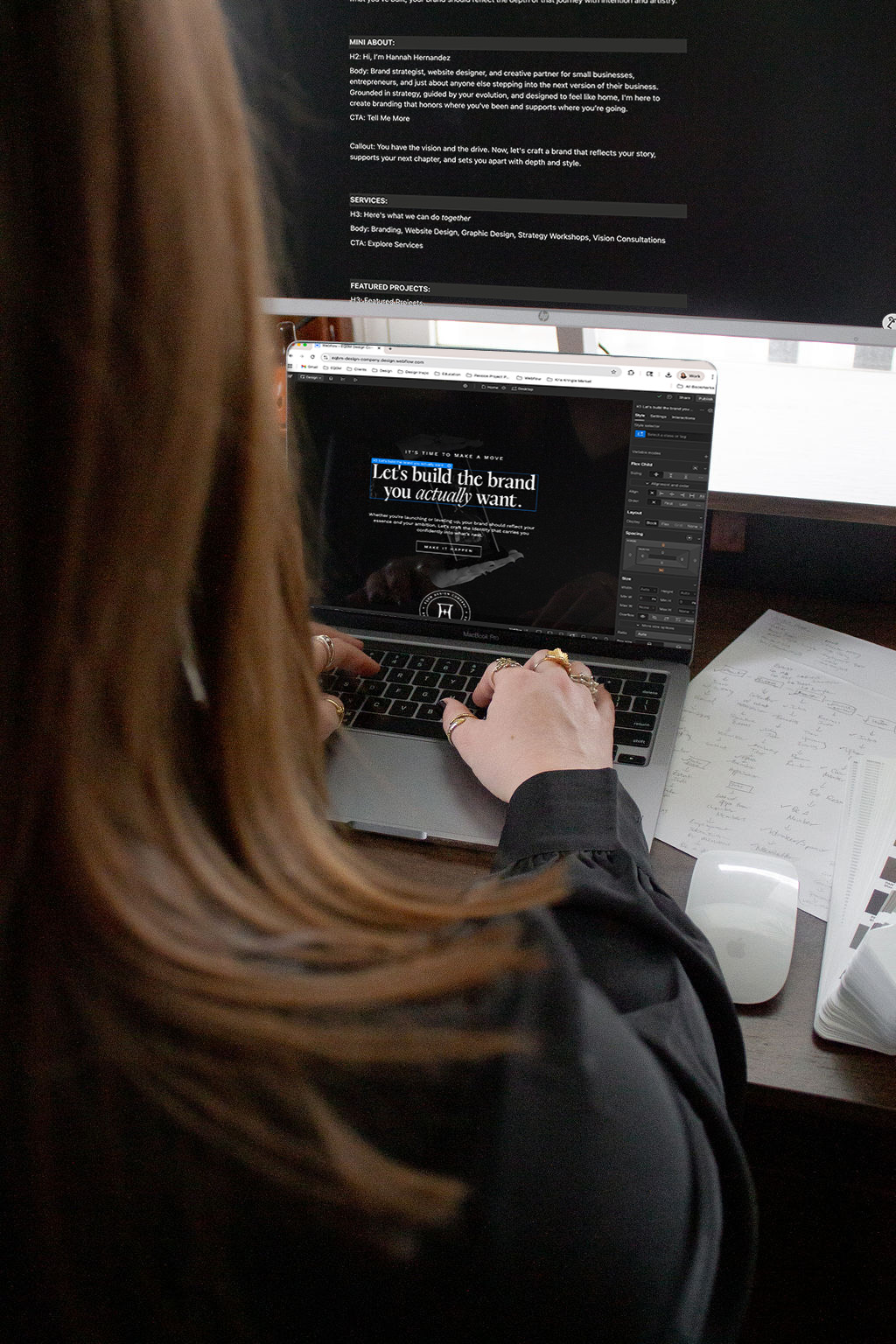If you want your newsletter to do more than sit quietly at the bottom of your website, it needs a dedicated place.
Here’s why:
- Clarity for your audience. You have one link you can share anywhere, such as on your social media profiles, speaking bios, podcasts, and even QR codes at events.
- Stronger positioning. Your newsletter looks like a core part of your brand instead of an afterthought.
- SEO benefits. A page optimized with the right keywords helps people actually find you when they’re searching.
- Better storytelling. You can highlight past issues, explain what your newsletter is about, and show why it’s worth opening every week.
A newsletter page not only clarifies what you offer, but it also helps visitors understand why your emails are worth their time and makes growing your list more strategic.
Here’s a step-by-step guide on how to build it out:
Plan Your Page Sections
A well-structured newsletter page makes it easy for people to understand what they’re signing up for. I recommend including:
- Intro Header: This is a short, compelling headline that tells visitors what your newsletter is about.
- "What You’ll Get": This section should highlight the value your subscribers will receive, such as tips, behind-the-scenes insight, free resources, or weekly inspiration.
- Past Topics/Highlights: Show examples of previous issues or topics to give readers a tease of what they can expect weekly.
- About You: This is your chance to showcase who you are while directly relating your expertise and why you're relevant to what they're working on.
- Sign-Up Form: The most important part of your page! Make sure your sign-up is easy for visitors to fill out.
- Call-to-Action Section: Whether they do or don't sign up, offering another way to engage, like a free download or link to your new blog post, is a great way to keep people interested in you and on your site longer.
When I’m creating any page on a website, I always outline the sections on a piece of paper with simple boxes, so I can better understand how everything will flow.
This is also helpful when it comes to creating your website copy. Knowing what you need and what you won’t need will save you loads of precious time in your business. You can always add in and/or refine/delete sections and copy as time goes on.
Optimize for Search Engines
A newsletter page isn’t just beneficial for the real-life visitors coming to your site. Search engines love to see a developed page as well.
- Title Tag: This is the clickable headline people see on Google. You’ll want to keep it clear and relevant.
- Meta Description: This is the short summary under the title tag that previews the page content. The description is the first chance you have to capture a viewer’s attention and convince them that your page is what they’re looking for.
- Keywords: You’ll want to sprinkle relevant terms naturally throughout your headings and copy so search engines understand what your page is about.
- Alt Text: Alt text is used by screen readers and provides a fallback to display in case an image doesn’t load properly.
Once you have your sitemap, written your copy and you’ve optimized for search engines, you’ll move on to actually building out the page on your web platform.
Design, Test, and Launch
You’ve planned your sections and optimized your content. Now, it’s time to bring your newsletter page to life and make sure it actually works for your visitors. This step is all about creating a seamless experience, checking that everything functions correctly, and getting the page in front of the people who should see it. Here’s how:
- Design for clarity and readability: Make your layout clean and visually intuitive. Ensure headings, spacing, and fonts are easy to read on desktop, tablet, and mobile.
- Test every element: Double-check links, buttons, and the sign-up form. Make sure your chosen email platform is correctly integrated so subscribers are captured without any glitches.
- Promote intentionally: Share your newsletter page wherever your audience is: website menus, social media, email signatures, podcasts, or any campaign where you want to grow your list strategically.
By combining thoughtful design, careful testing, and consistent promotion, your newsletter page becomes a strategic asset that helps grow your email list efficiently and intentionally.
You can view my finished project on this page.
A dedicated newsletter page turns a simple form into an intentional, conversion-focused asset.
By following these steps, you can give your newsletter a proper home and grow your list strategically.
And if building out your newsletter page feels overwhelming – or you just want it done quickly and efficiently – consider booking a Design Day with me.
In one full design day, we can plan, design, and launch a page that converts visitors into subscribers while reflecting your brand. It’s a fast, strategic way to get your newsletter page live without taking time away from what you need to be focused on.



